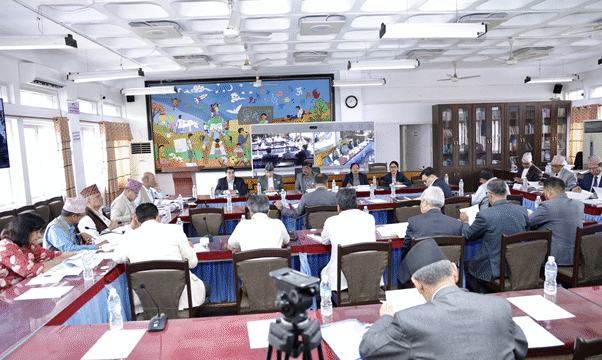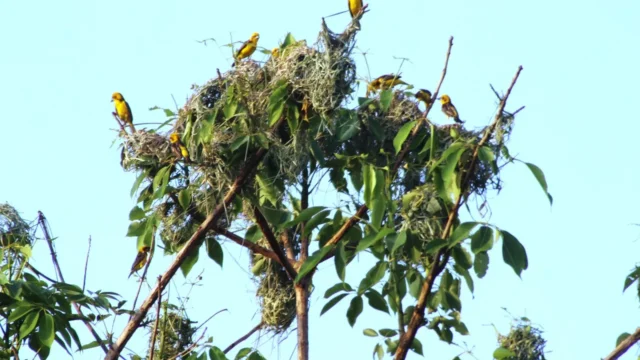A rare and unexpected sighting of an Asian River dolphin in the Budhi Rapti River near Chitwan National Park has garnered significant attention from both conservationists and wildlife enthusiasts. The dolphin was first spotted around 9 a.m. on Sunday by Jit Bahadur Tamang and Rabi Shrestha, who immediately captured footage of the dolphin swimming and hopping in the river.
The video, recorded at Dungaghat in Budhi Rapti, quickly gained popularity online, with numerous netizens sharing and watching the rare encounter. Tamang, who also serves as the president of Baghmara Buffer Zone Community Forest, expressed his amazement, noting that this is the first time in his decades of conservation work that he has seen such a creature in the area.
“We spotted it together in Budhi Rapti early this morning, between Baghmara and Chitrasen community forests on the Ratnanagar-Sauraha border,” Tamang told The Himalayan Times (THT). “This sighting is surprising but very soothing, as it reflects the rich biodiversity of our area. Despite being born and raised in Sauraha, and having spent over two decades in conservation, I have never seen this species before.”
According to Tamang, local residents have no historical memory of dolphins in the area, though some reports suggest that dolphins were last seen around 50 years ago in the Kasara area near Chitwan National Park.
Ujjawal Upadhyay, a biodiversity expert and wildlife photographer, provided further insights, noting that the dolphin was spotted more than 22 kilometers from the confluence of the Narayani and Rapti rivers. “This indicates that the dolphin passed through the Narayani River, migrating from the Ganges River to this location,” Upadhyay told THT. He emphasized the ecological significance of such sightings, highlighting the area as an ecological hotspot where endangered species can thrive.
Upadhyay also stressed the importance of enacting and enforcing strict environmental laws to protect such habitats from external influences, including pollution. He pointed out that while the dolphin was sighted during the rainy season, dolphins were historically present throughout the year, underlining the need for year-round protection of these critical habitats.
According to the World Wildlife Fund (WWF), immediate action is necessary to prevent the extinction of these charismatic animals. The Asian River dolphin, part of the genus Platanista, is native to the waterways of the Indian subcontinent and was historically considered a single species with the Ganges and Indus river dolphins as subspecies. However, recent genetic and morphological research has recognized them as distinct species, with the Ganges and Indus river dolphins diverging approximately 550,000 years ago.
Unfortunately, Ganges River dolphins have become increasingly scarce in Nepal. A 2016 report by the Department of Wildlife Conservation and National Parks estimated that only 52 dolphins remained in the country, with 43 in the Karnali River and its tributaries and nine in the Kosi River. This rare sighting in the Rapti River has reignited discussions on the importance of protecting these endangered species and their habitats.






